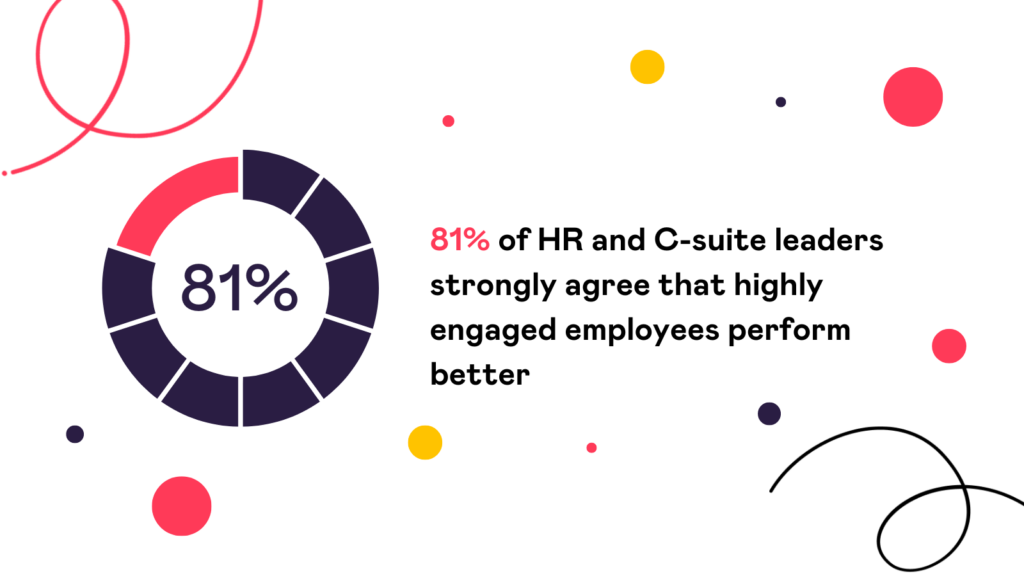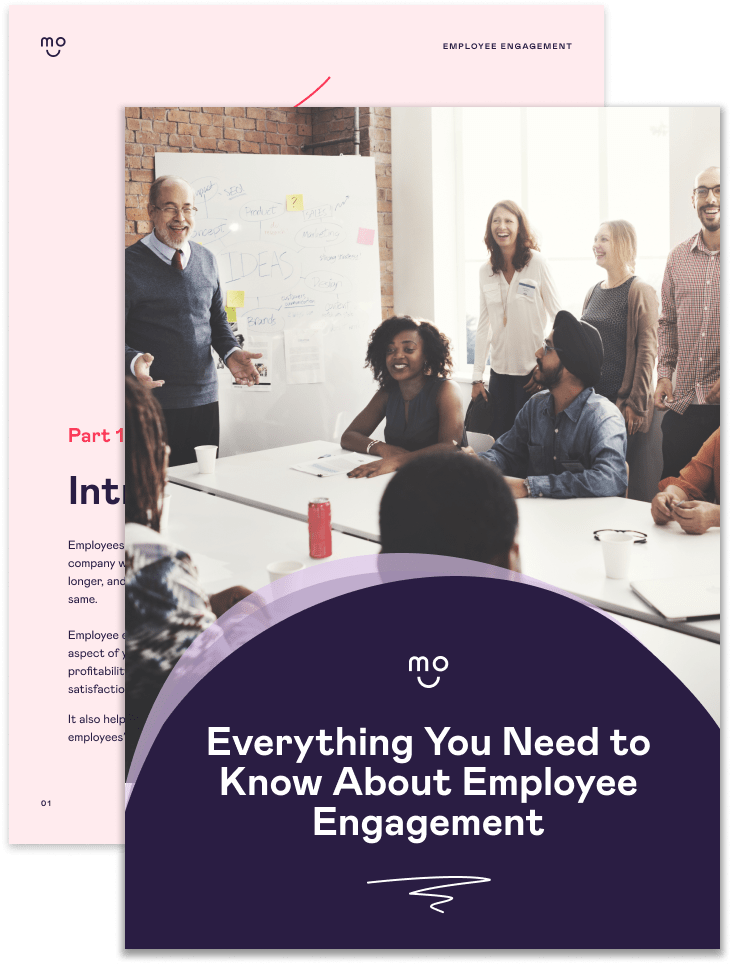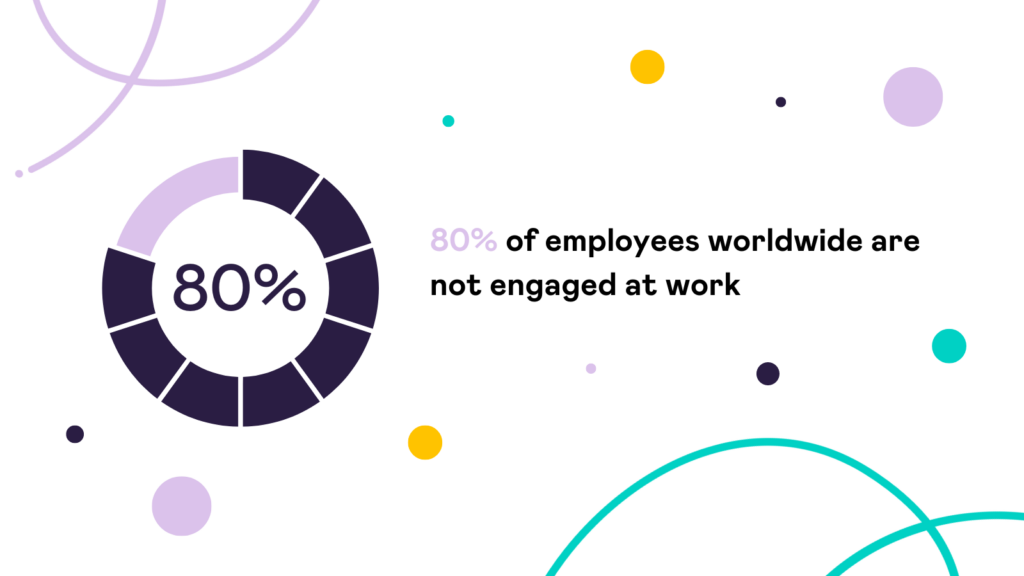Improving retention rates is one of the biggest boosts you can give your business. It saves you time and money and helps you hang on to the kind of talent and expertise that can help organisations consistently grow, evolve and achieve.
If retention is a problem you’re looking to address, you’re not alone. McKinsey & Company reported that more UK employees are leaving their jobs than ever before. Trends towards digitisation and automation, as well as a desire for flexible and remote work, have been growing for years. The pandemic accelerated their development, resulting in talent shortages and increased turnover.
We’ll cover:
- Why is employee retention important?
- How employee engagement impacts retention
- Who should be in charge of employee engagement?
- Effective employee engagement and retention strategies
Ready to improve your retention rates? The first place to look is at your employee engagement strategy.
Why is employee engagement important?
According to the Harvard Business Review, 81% of HR and C-suite leaders strongly agree that highly engaged employees perform better. Your employees are the key to your business succeeding or failing. Those organisations that clearly value their people will get a significant return on their investment.

So what are the benefits of building a highly engaged workforce?
- Improved performance and productivity
- Increased employee retention
- Lower chance of burnout
- Lower employee absenteeism
- Lowered workplace stress levels
- Positive brand reputation – making it easier to hire
Why is employee retention important?
Hiring, onboarding and bedding in new employees are very HR-intensive tasks and require significant investment – so the last thing you want to do is see all that effort go to waste.
Replacing staff is expensive, and a low employee retention rate can also significantly impact overall morale. As team members see their friends and colleagues leave, they can grow discouraged and are more likely to become disillusioned, disengaged, and even contemplate leaving themselves.
It’s especially painful to see top talent or high-performing employees choosing to walk away. The good news is that if you can improve your employee engagement strategy, you’re also taking one step toward improving retention levels.

Everything You Need to Know About Employee Engagement
Get your complete guide on all things employee engagement
How employee engagement impacts retention
Poor employee engagement can start the best talent off on the wrong foot, making it difficult for them to feel excited about their job from day one.
Employees are more likely to stay when they are engaged, which reduces overall turnover and the costs associated with it. They will feel a stronger bond to the organisation’s mission and purpose and build stronger relationships in the workplace and with customers, which impacts sales and profitability.
According to the State of the Global Workplace Report by Gallup, businesses that are actively engaging their employees will see an 18% decrease in staff turnover. The same report highlighted other benefits too. Not only does high employee engagement improve retention, but it also has a massive impact on absenteeism and productivity.
Who should be in charge of employee engagement?
According to Gallup, as much as 80% of the worldwide workforce is still not engaged, or are actively disengaged, at work. The main reason? That employee engagement is seen as the job of the HR department. It’s not owned and championed by leaders and managers.

Frustrated executives often jump straight to an engagement tool, without first putting in place the frameworks for employee engagement to be prioritised and owned by every single people manager in the company. As a result, tools get thrown into the mix as a reaction, and unsurprisingly engagement scores don’t improve, and employee retention continues to dwindle.
Improving employee engagement has to start with an employee engagement survey tool to measure where you’re at right now, and the areas for improvement. Every manager should be partially evaluated on their team’s employee engagement scores – as the saying goes, “what gets measured gets done.” Only by showing your people that engagement is a strategic priority for the business will it rise up the to-do list.
How to improve employee engagement
Everyone in the company should play an important role in ensuring the success of employee engagement initiatives. Increasing engagement also takes time and effort, especially when the levels are low. But it’s well worth the effort. Here are a few key elements you could consider including in your strategy.
Encourage feedback
According to Officevibe, 28% of employees say that feedback is not frequent enough to help them understand how to improve. It’s hugely important for every people leader to set aside time to give feedback to their team, and also to receive feedback in return.
Start with setting up regular one to ones with your team. It can help to send them questions to reflect on ahead of time, and share any constructive feedback in writing so that they have a chance to think about it and respond in their own time. Here at Mo, we use a monthly check in template that each manager sends to their direct reports a few days ahead of their check-in meetings.
Focus on work-life balance and wellbeing
The better supported your employees feel, the happier and healthier they’re likely to be. This means everything from introducing wellbeing programs to ensuring managers aren’t setting unrealistic expectations.
Flexibility is one of the best things you can give your employees as they attempt to navigate busy lives both at work and at home. Offering flexitime or remote working can help your team manage their own time and improve their work-life balance – ultimately making them happier to stay in your organisation.
Create a psychologically safe working environment
Psychological safety is something to strive for in the workplace. It’s all about building trust and creating a safe place to share honest feedback and feelings openly.
If you’re unsure of where exactly you’re lacking and feel you’ve done everything possible to create a psychologically safe environment, then you are in a great position to carry out an employee engagement survey. This feedback from your team will be useful in getting to the heart of your issues.
Introduce a successful recognition program
A good recognition program can be one of your biggest assets in building engagement. It helps employees feel valued and allows them to build a sense of security in their position.
Make sure employees feel seen and appreciated with a solid reward and recognition platform. Ideally, choose a solution that allows peer-to-peer and manager-led recognition to make it easy for your teams to collaborate and celebrate. At Mo, we know how effective it is to make it easy for employees to boost each other!
Create a culture of engagement
If you’re looking to create a culture of engagement, everyone needs to be onboard – from HR to employees. The different elements that make up a company’s culture are unique, and determining the desired culture depends on your leadership teams.
Ideally, you want to create a culture that encourages, supports and motivates your employees. By communicating the value of engagement and the mission with both employees and leaders, you can ensure everyone is on the same page.
Transform your culture with Mo

- Improve employee engagement scores
- Reduce employee churn
- Build a collaborative culture
Mo is a new kind of reward and recognition platform that makes it easy for busy managers to meaningfully recognise, engage and connect with their teams.
We equip managers with weekly suggestions to energise and connect with their people, help teams build habits of recognition into their day-to-day rhythms and go beyond simple rewards as a way to motivate staff.
Join companies like SHL, OVO Energy and William Hill in delivering meaningful improvement on engagement results with Mo. Book a free demo today!




